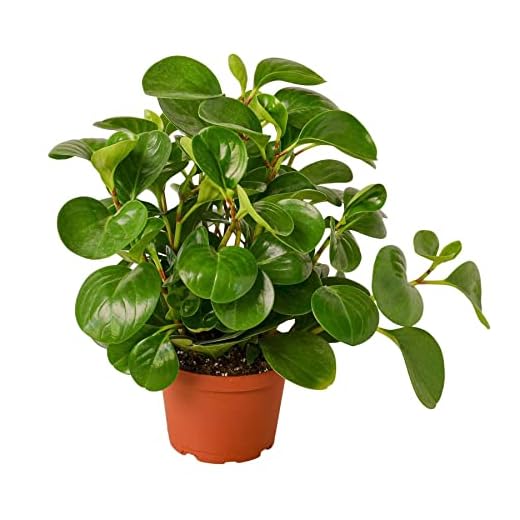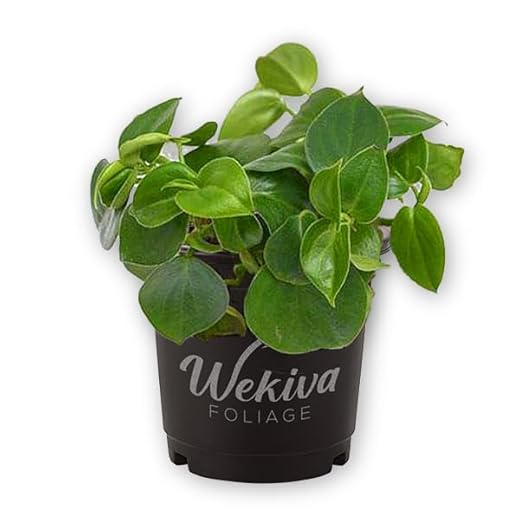



As a curious Scottish Fold, I often find myself exploring the green wonders around my home. It’s crucial to know which plants are safe for my kind. Some houseplants can cause discomfort or health issues if nibbled on. Specifically, plants from the genus that includes thick, succulent leaves tend to be safe for my feline companions.
In my explorations, I’ve learned that these particular green companions are generally non-harmful. They won’t cause serious health problems if I happen to take a bite. However, mild stomach upset can occur if ingested in large quantities. It’s always wise for my human to keep an eye on my plant interactions.
For peace of mind, it’s best to research before bringing any new greenery into our shared space. If you’re thinking of adding more plants, make sure they belong to the safe categories to ensure a happy and healthy environment for your furry friend.
Are Peperomias Safe for Felines?
These lovely houseplants are generally safe for my kind. They don’t pose any significant health risks if a curious feline decides to take a nibble. Mild gastrointestinal upset might occur in some cases, but serious reactions are rare.
Signs of Mild Discomfort
If you notice any signs of distress after your furry friend samples one of those plants, keep an eye out for symptoms like vomiting or diarrhea. These issues typically resolve on their own without much intervention.
Best Practices for Plant Owners
To ensure a safe environment, it’s wise to place any greenery out of reach. Even if a particular species isn’t harmful, it’s always better to prevent any potential mishaps. Regularly monitoring your space and being aware of what your pet interacts with is key to maintaining a happy home.
Understanding Peperomia Varieties and Their Safety
When choosing houseplants, it’s crucial to know which types are safe and which ones may pose risks. Various types of these plants exist, each with unique characteristics. Some popular varieties include Peperomia obtusifolia, known for its round leaves, and Peperomia caperata, which features textured foliage. These varieties are generally considered non-harmful.
It’s essential to observe how your furry friends interact with any plants. While the majority of these plants do not cause severe reactions, some cats may experience mild gastrointestinal upset if they ingest parts of these plants. Monitoring your pet’s behavior around these plants will help identify any adverse reactions.
For pet owners, keeping these plants out of reach can be a wise precaution. Placing them on shelves or in areas that are difficult for curious paws to access minimizes the risk of nibbling. Regularly checking for any signs of plant damage can also indicate if your pet is engaging with them.
In summary, while many varieties are safe, it’s always best to be vigilant. Knowing the specific types in your home and their effects on your feline companions ensures a harmonious living space for all. Stay informed and keep your environment safe for both plants and pets.
Identifying Symptoms of Poisoning in Cats
Watch for these signs if you suspect your feline friend has ingested a harmful plant:
| Symptom | Description |
|---|---|
| Vomiting | Frequent or unusual vomiting can indicate distress. |
| Diarrhea | Loose stools or frequent trips to the litter box may occur. |
| Excessive Drooling | Noticeable drooling can signal oral irritation or nausea. |
| Lethargy | Uncharacteristic tiredness or lack of energy should raise concerns. |
| Loss of Appetite | Refusal to eat food can be a warning sign of illness. |
| Tremors | Shaking or trembling may indicate neurological distress. |
| Difficulty Breathing | Labored breathing or increased respiratory rate requires immediate attention. |
If you notice any of these symptoms, contact your veterinarian right away. Timely intervention is crucial. Additionally, keeping stimulating toys for old cats can help keep your buddy engaged and reduce the likelihood of them exploring harmful plants.
What to Do If Your Cat Ingests Peperomia
If you suspect that your feline friend has consumed any part of this plant, act quickly. First, assess the situation and identify how much was ingested. If it was a small amount, monitor your pet closely for any unusual behavior or symptoms.
Immediate Steps
- Remove any remaining plant material from the area to prevent further ingestion.
- Contact your veterinarian for advice. They may ask for details about the specific type of plant and the amount consumed.
- If symptoms appear, such as vomiting or lethargy, take your cat to the vet immediately.
Symptoms to Watch For
Keep an eye out for signs of distress. If your companion shows any of these symptoms, notify your vet:
- Vomiting
- Drooling
- Diarrhea
- Loss of appetite
- Lethargy
After ensuring your furry buddy is safe, you might want to take a break and enjoy some cooking yourself. Check out this how to cook lobster tail in cast iron skillet recipe! It’s a great way to unwind after a stressful situation.
Safe Alternatives for Cat Owners
Spider plants are a great choice for those who want greenery without risk. They are non-harmful and thrive in various conditions. Plus, they produce baby plants that can be easily propagated.
Bamboo palms are another excellent option. They add a tropical feel to your space and are safe for furry friends. These plants also purify the air, making your home healthier.
Ponytail palms are unique and resilient. They require minimal care and are completely safe for your feline companions. Their quirky shape adds character to any room.
Boston ferns are lush and beautiful. They prefer humid environments, so placing them in the bathroom or kitchen can be beneficial. They are also non-harmful to pets.
Calathea plants offer stunning foliage and patterns. They thrive in low light and are safe for playful paws. Their vibrant leaves can brighten up any corner of your home.
Finally, consider the prayer plant. With its striking colors and patterns, it’s visually appealing and poses no threat to your beloved pets. Its care requirements are straightforward, making it suitable for busy owners.
How to Create a Cat-Friendly Indoor Garden
Choose non-harmful plants like spider plants, Boston ferns, and cat grass. They’re safe for me and provide greenery without worry. Use pots that are sturdy and hard to tip over, ensuring I can’t disturb them while exploring.
Arrange greenery at various heights. I enjoy climbing and jumping, so elevated shelves or hanging planters create an inviting environment. Just make sure there are no delicate items nearby that I can knock down!
Incorporate scratching posts near the plants. This diverts my attention and keeps my claws busy. Sisal-wrapped posts are great and match well with the greenery. It’s a win-win!
Maintain a clean space by regularly checking for fallen leaves or debris that could attract my curiosity. A tidy area is less tempting and keeps me safe from any potential hazards.
Consider using natural repellents like citrus peels around the garden. I dislike the scent, and it helps keep me away from the plants that might not be safe. It’s a simple way to protect both me and the plants.
Finally, create a cozy corner with a soft blanket or a cat bed nearby. This gives me a space to relax and watch the garden without getting into trouble. It’s my little observation post!
Expert Opinions on Houseplants and Pet Safety
Always choose plants that are safe for furry friends. Some experts recommend checking resources like the ASPCA website for lists of pet-friendly greenery. Regular consultations with veterinarians can provide personalized advice based on specific breeds and health conditions.
Consult Trusted Sources
Reliable plant databases can help identify which species are safe. Look for guidance from local horticulturists or pet care professionals. They can share insights on which plants may cause gastrointestinal upset or other issues.
Monitor Your Feline’s Behavior
Watch for any unusual signs in your pet after introducing new plants. Changes in appetite, vomiting, or lethargy should prompt immediate veterinary attention. Keeping a close eye can prevent potential health concerns and ensure a harmonious living space.
Staying informed and proactive is key. Creating a safe indoor environment not only protects your pet but enhances your home’s atmosphere with greenery.
Resources for Further Research on Plant Safety
For those seeking more information about plant safety concerning furry companions, several reliable sources can enhance your knowledge.
Websites
- ASPCA Poison Control – Comprehensive database of plants and their effects on pets.
- Pet Poison Helpline – A service offering advice and information on potential pet poisoning cases.
- Humane Society – Lists of pet-friendly plants and practical tips for pet owners.
Books
- “Pet Poisoning: The Essential Guide” – This book covers various toxic plants and what to do in case of ingestion.
- “The Complete Guide to Pet Safe Plants” – A thorough examination of non-harmful houseplants.
- “Caring for Your Cat: A Guide to Health and Safety” – Discusses common household hazards, including plants.
Staying informed is key to ensuring a safe environment for you and your furry friends. Always consult a veterinarian if there’s any doubt about a specific plant’s safety.
FAQ:
Are peperomias safe for cats to be around?
Peperomias are generally considered non-toxic to cats. This means that if a cat happens to nibble on a peperomia plant, it is unlikely to cause serious harm. However, while they are not toxic, it is still advisable to monitor your cat to ensure it does not develop any digestive issues from eating plant material, as some pets may have sensitive stomachs.
What should I do if my cat eats a peperomia plant?
If your cat has eaten a peperomia, there’s usually no need for panic since the plant is non-toxic. However, keep an eye on your cat for any signs of discomfort or unusual behavior, such as vomiting or lethargy. If you notice any concerning symptoms, it’s best to consult your veterinarian for advice. They can provide guidance based on the amount your cat may have consumed and its overall health.
Are there any plants that are similar to peperomias but are toxic to cats?
Yes, there are several houseplants that resemble peperomias but can be toxic to cats. For example, plants like pothos and philodendrons share a similar appearance but contain compounds that can be harmful if ingested. It’s wise to research any plant before bringing it into your home, especially if you have pets, to ensure it is safe for them. Creating a pet-friendly environment involves knowing which plants are safe and which ones to avoid.









